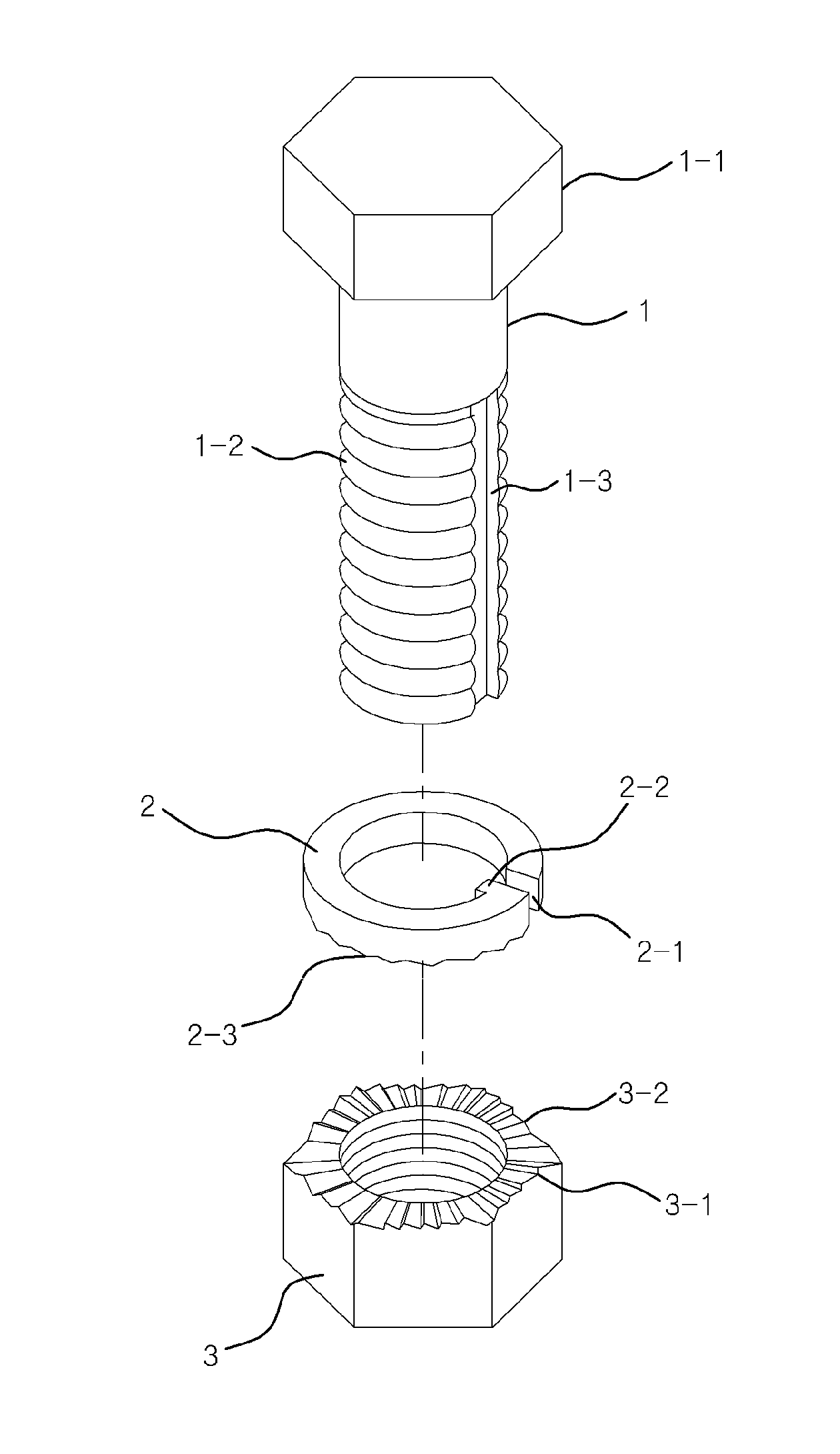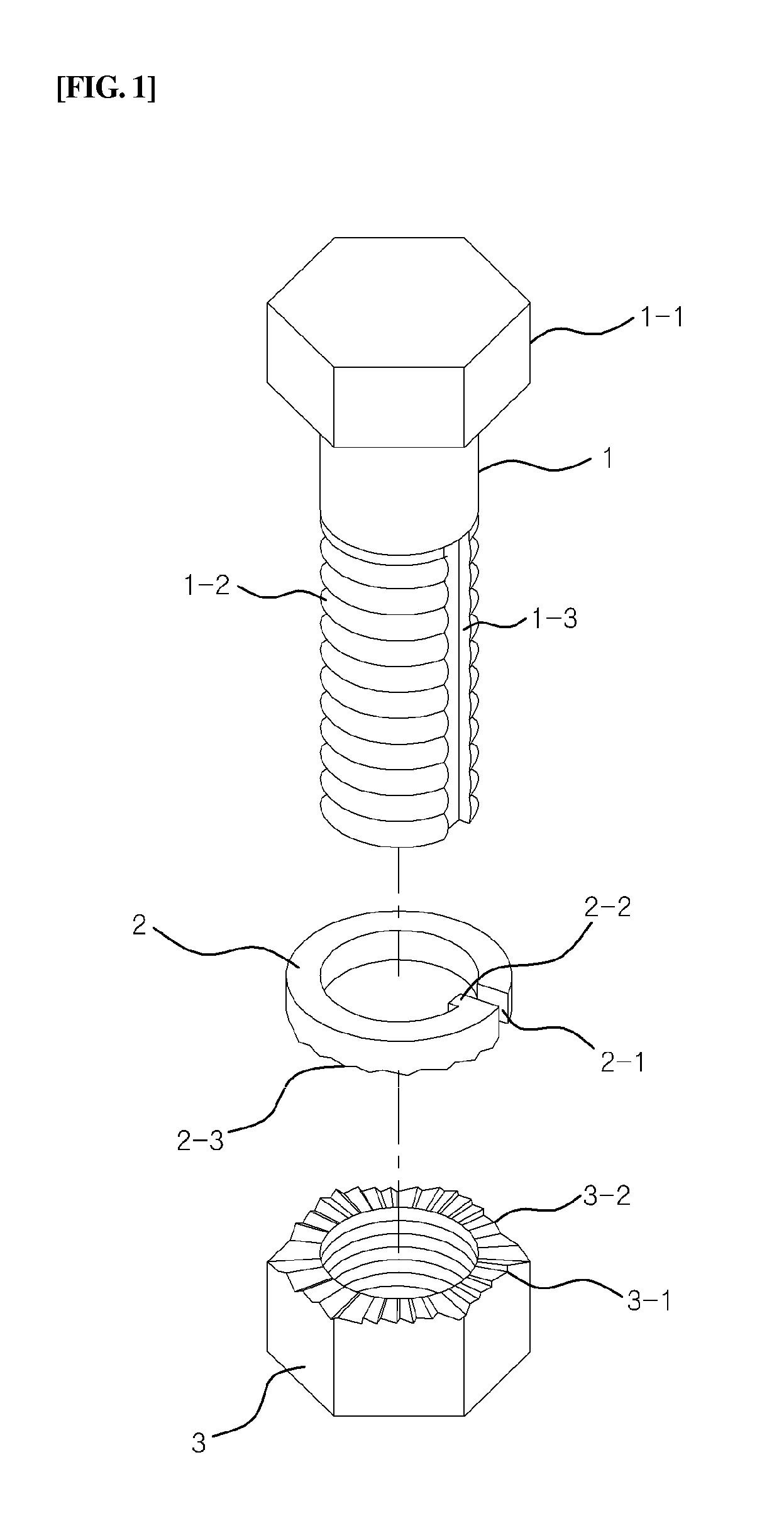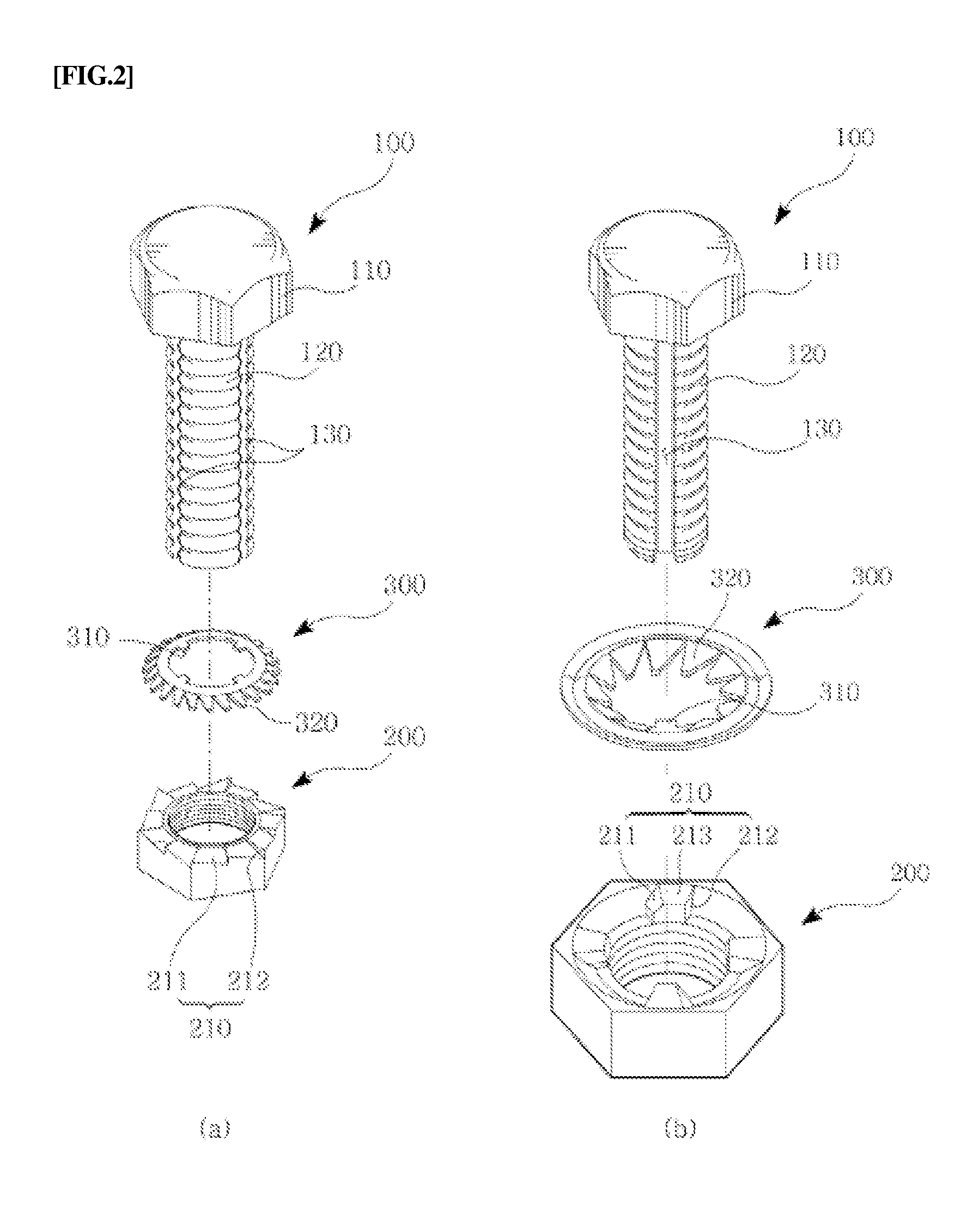Self-locking bolt nut assembly
a self-locking, bolt-nut technology, applied in the direction of screws, fastening means, washers, etc., can solve the problems of deteriorating the reliability of the coupling portion, unable to withstand a high bolt coupling torque and compression force, and unable to withstand a severe environmen
- Summary
- Abstract
- Description
- Claims
- Application Information
AI Technical Summary
Benefits of technology
Problems solved by technology
Method used
Image
Examples
Embodiment Construction
Hereinafter, preferred embodiments of the present invention will be described in detail with reference to the accompanying drawings.
FIG. 2 is of perspective views showing a preferred embodiment of the present invention, in which FIG. 2a illustrates the case where elastic protrusions 320 are provided around a circumferential outer edge of a washer 300, and FIG. 2b illustrates the case where elastic protrusions 320 are provided around a circumferential inner edge of a washer 300.
The bolt 100 includes a bolt head 110 and a bolt body 120. An external thread is formed around the bolt body 120, and an insertion guide groove 130 is formed in the bolt body 120 along the longitudinal direction of the bolt body 120. The insertion guide groove 130 may be single or, alternatively, it may comprise a plurality of insertion guide grooves 130.
The washer 300 includes a rotation-preventive protrusion 310 which protrudes from the circumferential inner edge of the washer 300 towards the center thereof ...
PUM
 Login to View More
Login to View More Abstract
Description
Claims
Application Information
 Login to View More
Login to View More - R&D
- Intellectual Property
- Life Sciences
- Materials
- Tech Scout
- Unparalleled Data Quality
- Higher Quality Content
- 60% Fewer Hallucinations
Browse by: Latest US Patents, China's latest patents, Technical Efficacy Thesaurus, Application Domain, Technology Topic, Popular Technical Reports.
© 2025 PatSnap. All rights reserved.Legal|Privacy policy|Modern Slavery Act Transparency Statement|Sitemap|About US| Contact US: help@patsnap.com



